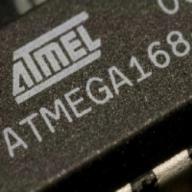The lift consists of a car aonnected to a counterweight over a drum.The weights of the car and the counterweight are 6500N and 600N respectively.A motor connected to the drum is used to drive the car up with a uniform speed of 2m/s.A passenger of weight 750N is insider the car
ai)Find the tension in the part of the cable connected to the car
ii)Find the tension in the part of the cable connected th the counterweight
iii)Explain why the 2tensions are different
b)calculate
Mechanics
2008-02-20 6:00 am
回答 (2)
2008-02-20 6:41 pm
✔ 最佳答案
a) i) Since there is no acceleration, the resultant force should be zero.tension to the car should be 750 + 6500 = 7250 N
ii) The same reason , tension = 600 N
iii) The difference in the 2 tension is balanced by friction of the drum.
2008-02-21 2:35 am
圖片參考:http://i182.photobucket.com/albums/x4/A_Hepburn_1990/A_Hepburn01Feb201823.jpg?t=1203503060
Denote in the figure:
T1 be the tension in the part of the cable connected to the car
T2 be the tension in the part of the cable connected to the counterweight
mcg be the weight of the counterweight
mlg be the weight of the car
mpg be the weight of the passenger
a. As the system is moving in uniform velocity
By Newton’s 1st law of motion, the net force acting on the objects should be zero.
i. T1 – (mlg + mpg) = 0
T1 = mlg + mpg
T1 = 6500 + 750
T1 = 7250 N
ii. T2 = mcg
T2 = 600 N
iii. The two tensions are different from each other since frictional force exists between the drum and the cable.
b.i. Gain in height of the passenger in one second, h = ut = 2 m
Useful power to raise the passenger
= Gain in P.E. / time
= mpgh / t
= (750)(2) / (1)
= 1500 W
ii. Power lost
= Work done against friction / time
= (T1 – T2)h / t
= (7250 - 600)(2) / 1
= 13 300 W
c. The weight of the couterweight is to balance the weight of the car.
d. A frictionless drum cannot be used since frictional force is necessary for the raising of the car.
參考: Myself~~~
收錄日期: 2021-04-14 19:43:37
原文連結 [永久失效]:
https://hk.answers.yahoo.com/question/index?qid=20080219000051KK03742


